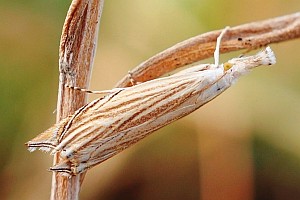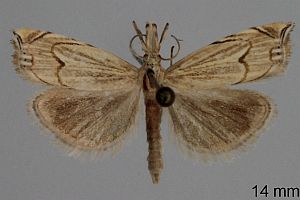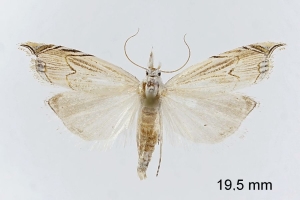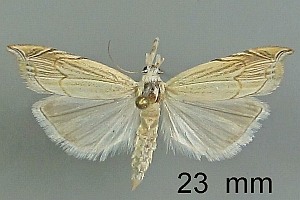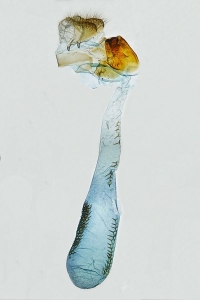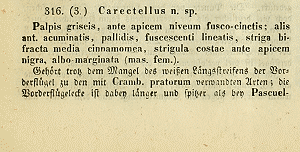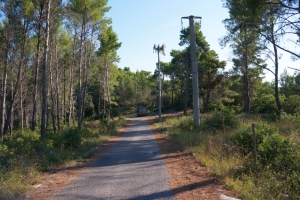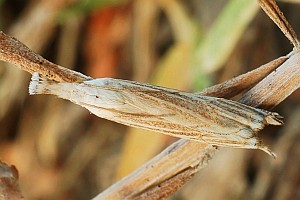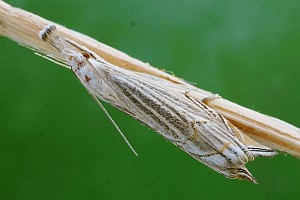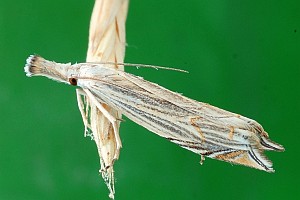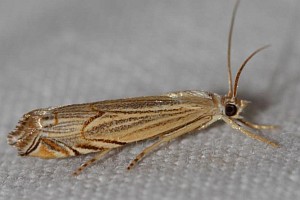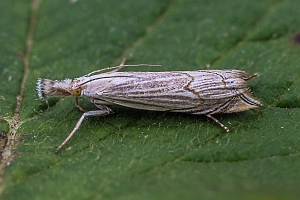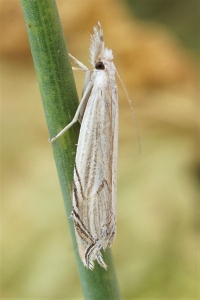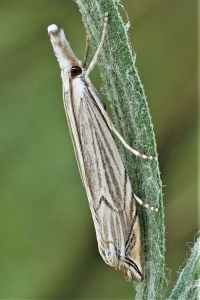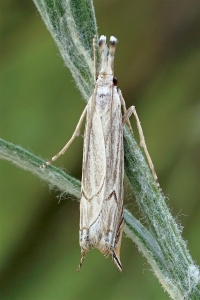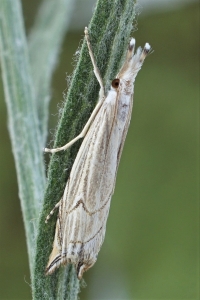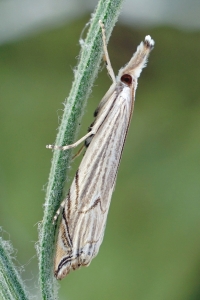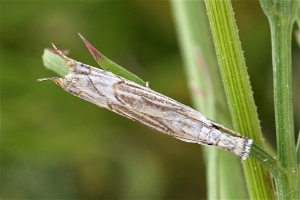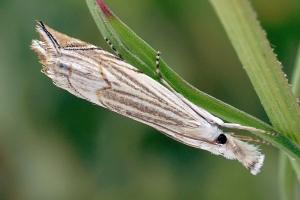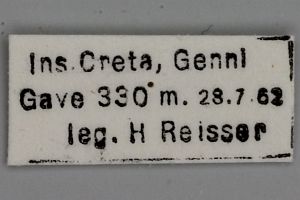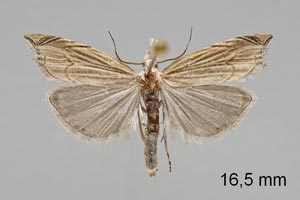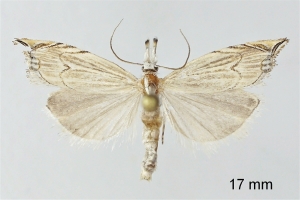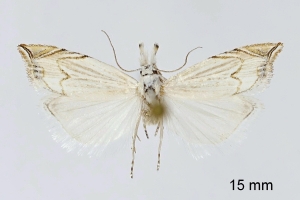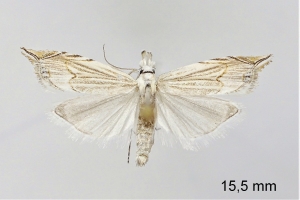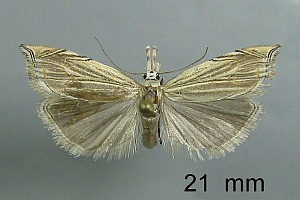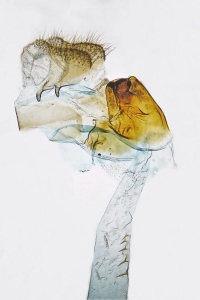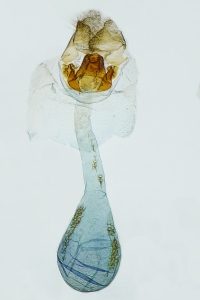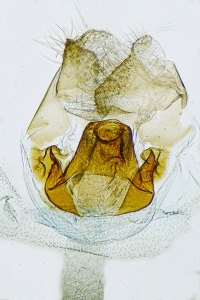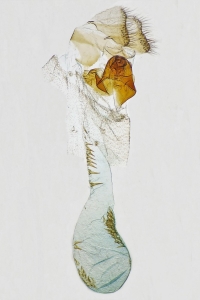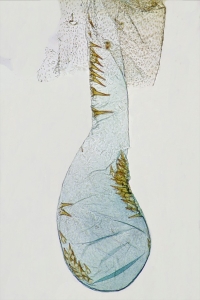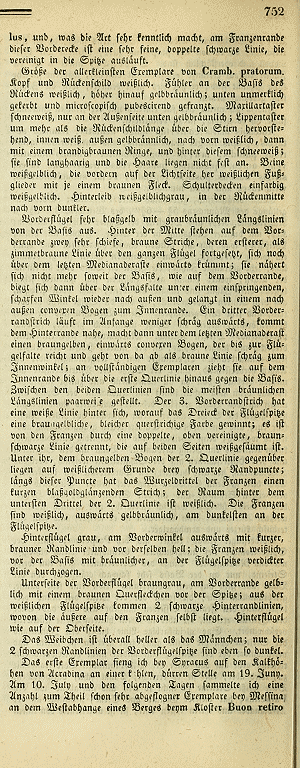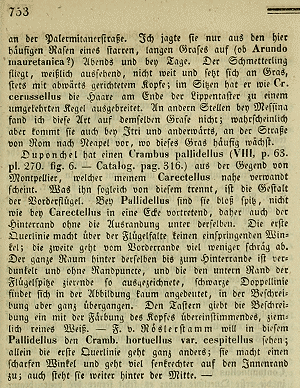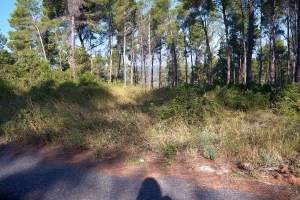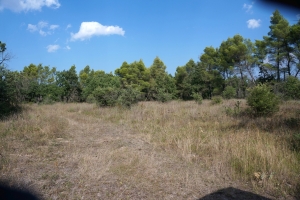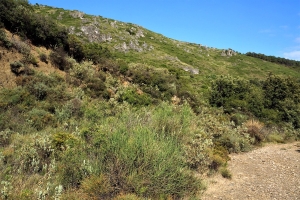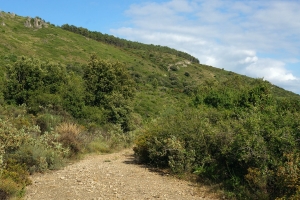

 +32Kontinente:EUAS
+32Kontinente:EUAS1. Lebendfotos
1.1. Falter
2. Diagnose
2.1. Männchen
2.2. Weibchen
2.3. Geschlecht nicht bestimmt
2.4. Genitalien
2.4.1. Weibchen
2.5. Erstbeschreibung
3. Biologie
3.1. Habitat
4. Weitere Informationen
4.1. Etymologie (Namenserklärung)
„caractum grasiger Ort.“
4.2. Andere Kombinationen
- Crambus carectellus Zeller, 1847 [Originalkombination]
- Mesocrambus carectellus (Zeller, 1847) [So bei Leraut (2012)]
4.3. Synonyme
- Crambus lugdunellus Millière, 1868
4.4. Taxonomie
Plant (2016: 99) lehnt die von Leraut vorgenommenen Änderungen ab: "Leraut (2012) synonymised the genus Metacrambus Błeszyński with Mesocrambus Błeszyński, the latter having page priority, on the basis of his examination of the palpi, venation and genitalia. Sketches of the genitalia were presented, but not of the other features mentioned nor was there any descriptive text to inform the reader which particular features of the genitalia were regarded as relevant. My own visual appraisal of various published drawings of the genitalia of the type species of each genus (Mesocrambus candiellus H.- S. and Metacrambus carectellus Zeller) leaves me less than convinced – specifically, the shape of the uncus and the form and arrangement of the costal processes of the valva differ markedly. The genus Metacrambus is here resurrected, as a minimum to accommodate the taxon carectellus. It should be emphasised, however, that I have not examined any type material."
4.5. Faunistik
Die Art ist im Mittelmeerraum von Portugal, Spanien, Südfrankreich, Italien bis Griechenland und weiter östlich verbreitet, aber wohl durchweg selten.
Huemer (2013) führt die Art für Österreich nur aus Niederösterreich an.
Plant (2016: 99) stellt die Funde aus Bulgarien zusammen und schreibt dazu: "M. carectellus is evidently rare in south-eastern europe and Bulgaria is no exception. Two look-alike species, M. jugaraicae Błeszyński and M. marabut Błeszyński are not particularly expected in the Balkans, but the three most recent reports of M. carectellus, below, have nevertheless been confirmed by genitalia examination. The records are: Burgas (Ganev, 1985a), almost certainly referring to the single specimen in the collection at NMNHS and labelled “Burgas, 6.VIII.1911”; Balchik area, 1 ♂ 25.VI.1930 (Popescu-Gorj, 1964), perhaps the source of the Balchik area record mapped by Slamka (2008); Nessebar, (Soffner, 1967; Gaev, 1985a); Primorsko, 1 ♂ 30.VI.2009, leg. B. Zlatkov & R. Bekchiev; east Rhodopes Mountains, Arda River between Madzharovo & Borislavtsi, 1 ♂ 20.VII.2011, leg. S. Beshkov; Kamchia, 1 ♂ 25.vII.2011, leg. B. Zlatkov & O. Sivilov and Rezovo, on the coast, 1 ♂ 29.VII.2012, leg. S. Beshkov." Zu ergänzen wäre der oben gezeigte Falter von F. Graf aus der Umgebung von Widin.
Corley, Nunes & Rosete (2021: 618-619) streichen die Art aus der Fauna von Portugal: “[...] recent re-examination of a number of specimens suggests that all records belonging to M. marabut.”
(Autoren: Erwin Rennwald & Jürgen Rodeland)
4.6. Literatur
- Corley, M. F. V., Nunes, J. & J. Rosete (2021): New and interesting Portuguese Lepidoptera records from 2020 (Insecta: Lepidoptera). — SHILAP Revista de lepidopterología 49 (196): 609-625.
- Huemer, P. (2013): Die Schmetterlinge Österreichs (Lepidoptera). Systematische und faunistische Checkliste. – 304 S. (Studiohefte 12); Innsbruck (Tiroler Landesmuseen-Betriebsgesellschaft m.b.H.).
- Leraut, P. (2012): Moths of Europe. Volume 3. Zygaenids, Pyralids 1 and Brachodids. - 599 S.; Verrières-le-Buisson (N.A.P Editions).
- Plant, C. W. (2016): An Annotated Systematic, Synonymic and Distributional Checklist of the Pyraloidea of Bulgaria (Lepidoptera, Crambidae & Pyralidae). — Neue Entomologische Nachrichten 72: 1-231.
- Slamka, F. (2008): Pyraloidea (Lepidoptera) of Europe, Volume 2. Identification - Distribution - Habitat - Biology. Crambinae & Schoenobiinae. - 223 S.; Bratislava (Eigenverlag František Slamka).
- Yepishin, V., Khalaim, Y. & S. Novytskyi (2024): The Pyraloidea of the Odesa region of Ukraine (Insecta: Lepidoptera). — SHILAP Revista de lepidopterología 52 (205): 115-141. [PDF auf shilap.org]
- Erstbeschreibung: Zeller, P. C. (1847): Bemerkungen über die auf einer Reise nach Italien und Sicilien beobachteten Schmetterlingsarten. — Isis von Oken 1847 (2): 121-159, (3) 213-233, (4) 284-308, (6) 401-457, (7) 481-522, (8) 561-594, (9) 641-673, (10) 721-771, (11) 801-859, (12) 881-914.






























